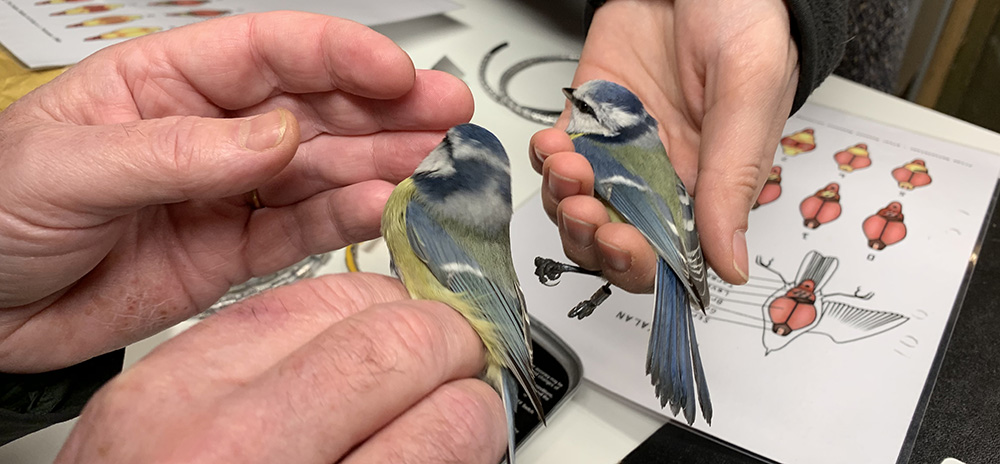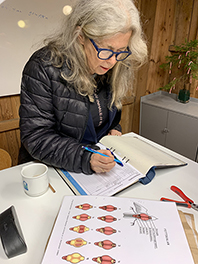Birds teaching climate change
This spring, Vetenskapens hus is launching a new climate education. By analyzing data from ringed birds, high school students can do draw their own conclusions about climate change.

Close to Brunnsviken a dusky morning in November, a man stands at a bird cage hoping to catch a Bohemian waxwing. Or maybe a Goldfinch. Bohemian Waxwingsare not easy to catch, they move in flocks and only show up during certain periods.

The birds caught in the cage are ringed at Naturens Hus, a branch of Vetenskapens Hus, which in turn belongs to the ITM school at KTH. In the Bergius Botanic Garden (Bergianska trädgården), Vetenskapens Hus teaches school children green biology, geology and environmental issues with the purpose to spread knowledge and awareness about nature and to rise an interest in natural sciences. And since beginning of this autumn, Naturens Hus rings birds. The idea is to launch a school program next semester.

“We wanted to do something interesting around the climate issue. Here, for example, climate change can be illustrated by looking at data from birds, data that are available thanks to the ring marking, says Ann Franzén who’s in charge at Naturens Hus.
High school students will learn facts about migratory birds, bird ringing as a research method and not least: the story - true or not – the discovery of where some birds disappeared during winter time when a stork with an African arrow pierced the body showed up.
This November day, the employees at Naturens Hus are assisted by two licensed bird ringers, Thord Fransson and Lina Jansson from the The Bird Ringing Centre at the Natural History Museum. Several staff members are learning to ring to eventually lead the school program and show visiting classes of ringed birds.
First out to be caught in the trap is a blue tit. Lina Jansson handles the lively bird with skilled hands. The tit gets a ring with a number around a leg, and its wing length, weight, and sex are determined. By blowing the bird's plumage the skin is exposed and the ringer can determine how well-fed it is on a ten-degree scale. All information is carefully recorded.
“With the help of data from birds, one can see, among other things, population changes and trends among the species.We get knowledge about reproduction, migration and survival rates in many bird species. It becomes like a form of environmental monitoring. Ringing birds is a multimethod that many researchers use to collect data,” Lina Jansson says.

A skinny woodpecker screams angrily - and loudly - and does its best to peck his way out of Lina’s grip. When she’s finished examining the bird, her hands are bleeding from several places. This is what you have to endure, she says.
Thord Fransson has ringed birds for 40 years, the first already as a 14-year-old. Now he has caught yet another blue tit which he is carefully examining.
"Blue tits are easy to handle whilst bullfinches are very easily stressed, you have to be quick," he says.
By the end of the morning ringing session, nine birds have been given an identity of their own - nine of all the around 300,000 birds that are ringed each year: seven blue tits, one great tit and the angry woodpecker. And Thord Fransson has to wait a little longer for a bohemian waxwing.
Text and photo: Anna Gullers

